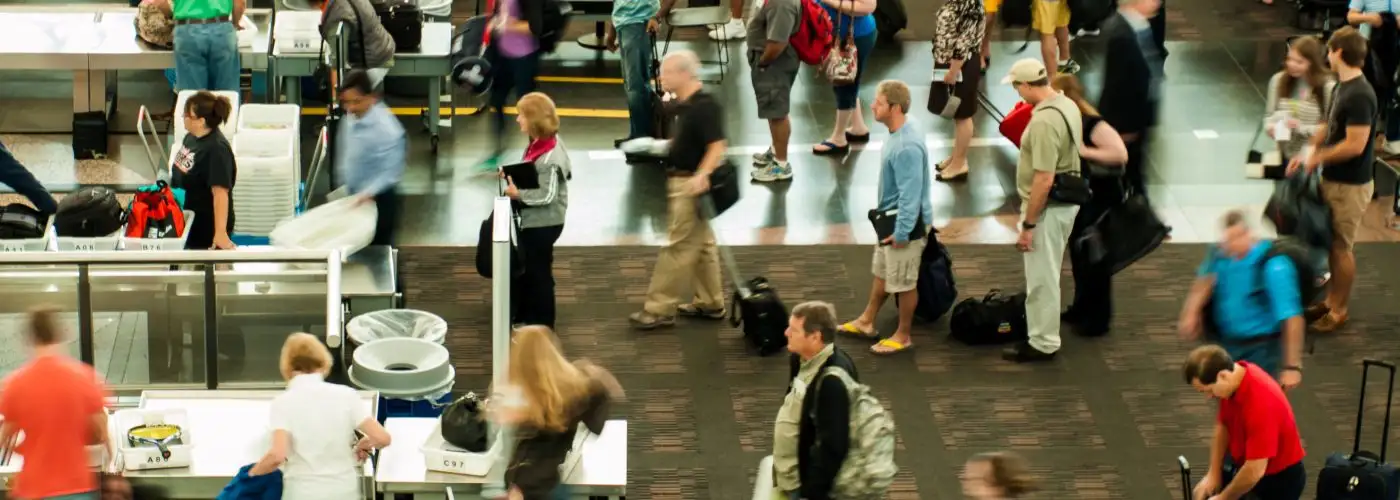The TSA and American Airlines are about to launch a joint test of new, partially automated screening checkpoints at a handful of the airline’s hub airports.
According to release from American, the tests include:
- Automated belts that draw bags into the X-ray machines, returning the bins back to queue after completion of the screening.
- Bags with a potential threat can be directed to a separate area to allow bins behind it to continue through the system uninterrupted.
- Property bins that are 25 percent larger than the bins in regular screening lanes.
- Unique Radio Frequency Identification (RFID) tags that are attached to each bin to allow for additional accountability of items as they transit throughout the system.
- Cameras that capture photos of the outside of the bag, which is linked to the X-ray image of the bag’s contents.
As you can see, none of these “innovations,” as American’s release calls them, are particularly significant. Automated bin belts are already in use in Europe, and bigger bins are just, well, bigger. No one is reinventing the wheel here.
But in combination, incremental improvements like these might have an impact. Simply keeping checkpoints moving smoothly will both speed up the process and reduce traveler frustration. After all, what’s more aggravating than standing in line with no shoes on while you wait for more the bins to be replenished?
Big Changes Might Be Coming, Too
The TSA is also going to test the use of CT scanners at security checkpoints. CT scanners are currently used to screen checked bags, and the hope is that using them on carry-ons could allow travelers to keep liquids, gels, aerosols and laptops in their bags at all times. CT scanners will be tested at Phoenix Sky Harbor airport later in 2016.
Unlike some of the smaller tests outlined above, CT scanners could drastically improve the checkpoint screening process. Imagine: Simply dropping your bag on a conveyor belt, removing your shoes, and … that’s it! Flying hasn’t been that simple since the ’90s.
This is the sort of screening technology people have been clamoring for since the early 2000s. As the TSA packed rules and restrictions, its screening process grew unwieldy and confusing, especially for people who don’t fly often. Finding a screening solution that simplifies this process for travelers while maintaining the TSA’s policies would be a godsend to frustrated travelers, airlines, and airport officials, so let’s hope this proves to be a viable option.
More from SmarterTravel:
- Congress OKs Funding to Ease TSA Wait Times
- Is the TSA’s PreCheck Overpriced and Overcomplicated?
- Why the TSA May Stop Accepting Your Driver’s License
We hand-pick everything we recommend and select items through testing and reviews. Some products are sent to us free of charge with no incentive to offer a favorable review. We offer our unbiased opinions and do not accept compensation to review products. All items are in stock and prices are accurate at the time of publication. If you buy something through our links, we may earn a commission.
Related
Top Fares From
Today's Top Travel Deals
Brought to you by ShermansTravel
Shop and Save with Country Inns...
Patricia Magaña
 Hotel & Lodging Deals
Hotel & Lodging Deals
$229 -- Chicago: Discounted Rates and...
Francesca Miele
 Hotel & Lodging Deals
$229+
Hotel & Lodging Deals
$229+
$188 -- Honolulu: Save on Oceanview...
Abigail Lamay
 Hotel & Lodging Deals
$188+
Hotel & Lodging Deals
$188+




